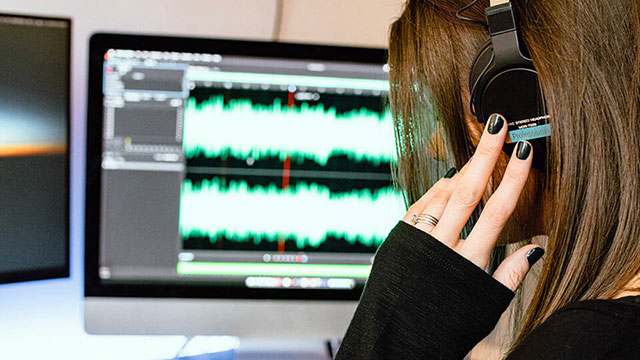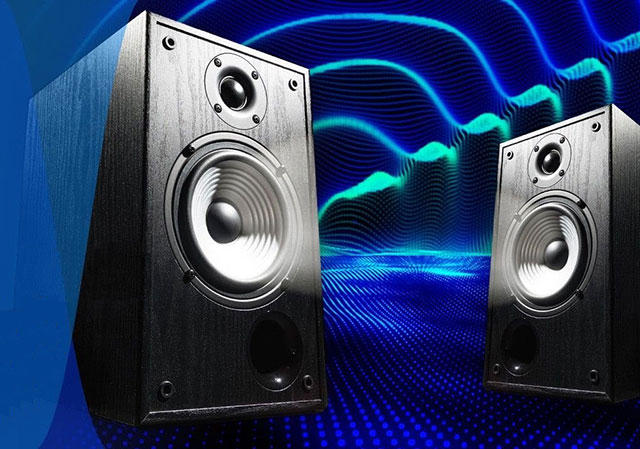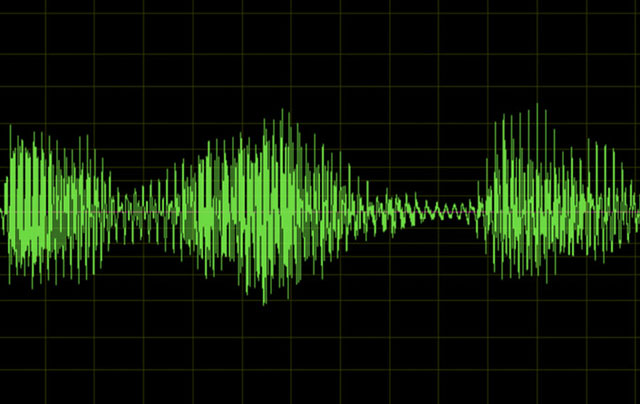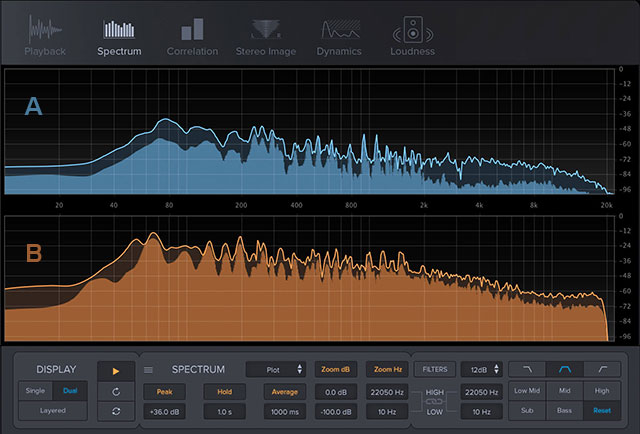Blog
Judging Mastered Tracks
 In the world of music production, the process of mastering plays a pivotal role in shaping the final sonic quality of a track. Mastering, often considered the last stage of production, involves refining and enhancing the audio to ensure it sounds its best across various playback systems. However, the journey doesn't end with the mastering engineer; it continues with the listeners who judge the mastered tracks.
In the world of music production, the process of mastering plays a pivotal role in shaping the final sonic quality of a track. Mastering, often considered the last stage of production, involves refining and enhancing the audio to ensure it sounds its best across various playback systems. However, the journey doesn't end with the mastering engineer; it continues with the listeners who judge the mastered tracks.
The ability to judge mastered tracks is of utmost importance for musicians, audio engineers, producers and even casual listeners. By developing a discerning ear and honing the skills necessary to evaluate the quality of a mastered track, one can appreciate the nuances and intricacies that contribute to an exceptional listening experience.
This comprehensive article aims to guide readers through the process of judging mastered tracks. It provides a detailed exploration of the key factors to consider when assessing the quality and characteristics of a mastered track. By following the guidelines outlined in this article, readers can develop their critical listening skills and gain a deeper understanding of the elements that contribute to a well-mastered track.
The article will delve into various aspects of judging mastered tracks, covering topics such as sound quality evaluation, stereo imaging and spatial balance, mix and master balance, detection of artifacts and technical issues, genre-specific considerations and the use of reference tracks for comparison. Additionally, it will provide insights into communicating feedback effectively and professionally.
Throughout the article, emphasis will be placed on providing practical tips and techniques that readers can apply when evaluating mastered tracks. By the end of the article, readers will be equipped with the knowledge and tools necessary to make informed judgments about the quality of mastered tracks.
Stay tuned as we embark on this journey of exploring the intricacies of judging mastered tracks. In the upcoming sections, we'll delve into each aspect in detail, unraveling the mysteries behind exceptional audio quality and helping you develop an ear that can appreciate the subtle nuances of a well-mastered track.
Understanding the Basics of Mastering Music
Definition of Mastering in the Music Production Process
 Mastering, within the realm of music production, represents the final stage where a skilled audio engineer refines and optimizes a mix to achieve its fullest potential. It involves a meticulous process of fine-tuning the overall sound, dynamics and tonal balance to ensure the track translates well across different playback systems.
Mastering, within the realm of music production, represents the final stage where a skilled audio engineer refines and optimizes a mix to achieve its fullest potential. It involves a meticulous process of fine-tuning the overall sound, dynamics and tonal balance to ensure the track translates well across different playback systems.
Mastering isn't simply a matter of adjusting volume levels. It encompasses a wide range of tasks, including but not limited to, equalization, compression, stereo enhancement, harmonic balancing and spatial enhancement. The mastering engineer carefully examines each element of the mix, making nuanced adjustments to achieve a cohesive and polished sound.
Role of Mastering in Enhancing Audio Quality and Consistency
The primary objective of mastering is to enhance the audio quality of a track, bringing out its best attributes and addressing any sonic imperfections. Through the skillful application of various tools and techniques, the mastering engineer aims to achieve clarity, depth and balance in the final mix.
Additionally, mastering plays a crucial role in maintaining consistency across an album or a collection of tracks. By applying similar processing settings and ensuring uniform loudness levels, the mastering engineer ensures a cohesive listening experience from start to finish. This consistency is particularly important when tracks are played back in a shuffled order or as part of a curated playlist.
The Difference Between Mixing and Mastering
While mixing and mastering are both integral parts of the music production process, they serve distinct purposes. Mixing involves combining individual audio tracks (such as vocals, instruments and effects) into a cohesive and balanced stereo or surround sound mix. It focuses on adjusting levels, panning and applying effects to create a well-balanced and engaging audio experience.
On the other hand, mastering occurs after the mixing phase and involves applying a set of specialized processes to the final mix. It takes the mixed track and fine-tunes it to ensure optimal playback across various systems. Mastering addresses the overall tonal balance, dynamic range, stereo imaging and other characteristics to achieve the desired sonic quality.
It's important to note that while mixing is typically done on a track-by-track basis, mastering involves working with the entire mix or album as a whole. Mastering also involves preparing the final tracks for distribution, ensuring they meet technical specifications and industry standards.
By understanding the basics of mastering, including its definition, role in enhancing audio quality and consistency and the differences between mixing and mastering, you gain valuable insights into the intricate process of bringing a track to its fullest potential.
Developing a Critical Ear for Mastered Tracks
Training Your Listening Skills for Music Evaluation
 When it comes to judging mastered tracks, developing a discerning and critical ear is paramount. It allows you to perceive subtle nuances, identify sonic irregularities and appreciate the intricate details that contribute to a well-mastered track. Here, we'll explore effective techniques for training your listening skills to enhance your music evaluation abilities.
When it comes to judging mastered tracks, developing a discerning and critical ear is paramount. It allows you to perceive subtle nuances, identify sonic irregularities and appreciate the intricate details that contribute to a well-mastered track. Here, we'll explore effective techniques for training your listening skills to enhance your music evaluation abilities.
Active Listening Techniques
Active listening is a deliberate and focused approach to listening that involves immersing yourself in the music and paying attention to its various elements. To train your listening skills, consider incorporating the following techniques:
- Deep Concentration
Find a quiet and distraction-free environment where you can give your undivided attention to the music. Eliminate external interruptions and create a conducive atmosphere for concentrated listening.
- Multiple Listening Sessions
Listen to the track multiple times, focusing on different aspects during each session. Pay attention to the instrumentation, vocals, dynamics, spatial effects and overall tonal balance. By approaching the track from different angles, you can gain a comprehensive understanding of its qualities.
- Aural Imaging
Visualize the sonic landscape as you listen. Picture the placement of instruments in the stereo field, the depth and space within the mix and the interactions between various elements. This technique can enhance your ability to assess stereo imaging and spatial balance.
Identifying Key Elements in a Track
To effectively evaluate mastered tracks, it's essential to identify and analyze key elements that contribute to the overall sonic experience. Consider the following factors during your listening sessions:
- Frequency Balance
Listen for the balance between low, mid and high frequencies. Pay attention to any frequency imbalances or excessive emphasis that may affect the tonal clarity and overall sonic integrity.
- Dynamics
Evaluate the dynamic range of the track, noting how the volume levels vary between different sections. Assess whether the dynamics are appropriately controlled to maintain interest and impact without sacrificing the details.
- Instrumentation and Arrangement
Focus on the individual instruments and their interaction within the mix. Evaluate the clarity, separation and coherence of each instrument. Consider how the arrangement contributes to the overall impact of the track.
- Spatial Effects and Depth
Listen for the presence and effectiveness of spatial effects, such as reverb, delay and panning. Assess how these effects enhance the perceived depth, width and immersive quality of the mix.
By actively training your listening skills and paying close attention to key elements in a track, you can develop a critical ear that allows you to evaluate mastered tracks with precision and nuance.
Evaluating Sound Quality
Analyzing Frequency Response and Tonality
 When judging mastered tracks, evaluating the sound quality is crucial. One aspect to consider is the frequency response and tonality of the track. Let's explore two key factors in this evaluation:
When judging mastered tracks, evaluating the sound quality is crucial. One aspect to consider is the frequency response and tonality of the track. Let's explore two key factors in this evaluation:
- Assessing the Balance of Frequencies
A well-mastered track exhibits a balanced distribution of frequencies. Listen attentively to identify how the low, mid and high frequencies are presented. Are they proportionate and harmoniously integrated? A balanced frequency response ensures that no frequency range dominates or is excessively subdued, resulting in a pleasing tonal balance.
- Detecting Frequency Imbalances or Overemphasis
While evaluating the frequency response, be vigilant for any imbalances or overemphasis that may affect the overall tonality. Excessive bass, for example, can result in a boomy or muddy sound, while an overly bright or harsh high end can lead to listener fatigue. Identifying such imbalances allows you to assess whether the mastering engineer has achieved a tonally cohesive mix.
Examining Dynamic Range and Compression
Another vital aspect of sound quality evaluation involves examining the dynamic range and the use of compression techniques within the mastered track. Here's what to consider:
- Identifying Proper Dynamic Range
Dynamic range refers to the difference between the softest and loudest moments in a track. A well-mastered track exhibits an appropriate dynamic range that enhances the musical impact. Listen for moments of intensity and contrast alongside quieter sections. Evaluate whether the dynamic range complements the musical intent, preserving the desired emotional impact of the music.
- Evaluating the Impact of Compression Techniques
Compression is a widely-used tool in mastering to control the dynamic range and ensure consistent volume levels. Assess the application of compression in the track, considering its effect on the music. Has excessive compression resulted in a loss of dynamics or a squashed sound? On the other hand, does it effectively enhance the track's balance and perceived loudness? By evaluating the impact of compression techniques, you can determine if they serve the overall musical vision.
By attentively analyzing the frequency response and tonality of a mastered track, as well as examining the dynamic range and the use of compression techniques, you can form a comprehensive assessment of the sound quality. These evaluations provide valuable insights into the mastering engineer's ability to achieve a balanced and sonically pleasing final product.
Assessing Stereo Imaging and Spatial Balance
Evaluating the Width and Depth of the Stereo Field
 When judging mastered tracks, assessing the stereo imaging and spatial balance is crucial. The following factors contribute to the overall perception of width and depth in the mix:
When judging mastered tracks, assessing the stereo imaging and spatial balance is crucial. The following factors contribute to the overall perception of width and depth in the mix:
- Evaluating the Width
Listen attentively to determine the width of the stereo field. Is the mix adequately spread across the left and right channels, creating a sense of spaciousness? A well-mastered track should provide a balanced stereo image, with instruments and elements occupying their appropriate positions within the soundstage.
- Assessing the Depth
Consider the depth and three-dimensionality of the mix. Are the instruments and vocals appropriately placed in the front, middle, or back of the sonic landscape? A masterful mix exhibits depth, allowing listeners to distinguish between foreground and background elements, creating a sense of realism and immersion.
Detecting Phase Issues and Mono Compatibility
Phase issues can arise when sounds interact or cancel each other out due to phase cancellation. It's crucial to assess phase coherence and mono compatibility in a mastered track. Pay attention to the following aspects:
- Detecting Phase Issues
Listen for any anomalies in the stereo image caused by phase cancellation. Phase issues can result in a loss of clarity, diminished stereo separation, or an uneven distribution of sound across the stereo field. Identifying and addressing phase issues ensures a more accurate and enjoyable listening experience.
- Ensuring Mono Compatibility
A track should also sound balanced and coherent when played back in mono, such as on certain playback systems or platforms. Evaluate how the elements of the mix come together when the stereo image collapses into a mono signal. A well-mastered track maintains its musical impact and clarity, even in mono playback.
Judging the Placement and Clarity of Instruments
The placement and clarity of instruments within the mix significantly contribute to the overall spatial balance. Consider the following factors when assessing instrument placement:
- Evaluating Instrument Placement
Focus on the perceived location and spacing of individual instruments within the stereo image. Are they appropriately positioned, creating a sense of depth and width? A well-mastered track should exhibit a clear and coherent placement of instruments, allowing listeners to distinguish between them.
- Assessing Instrument Clarity
Evaluate the clarity and separation of instruments within the mix. Can you easily identify and discern the individual sounds, or do they blend indistinctly? Each instrument should have its distinct presence, contributing to the overall sonic clarity and intelligibility.
By attentively evaluating the stereo imaging and spatial balance, including the width and depth of the stereo field, detecting phase issues and ensuring mono compatibility and judging the placement and clarity of instruments, you can gain a comprehensive understanding of the spatial characteristics of a mastered music track.
Gauging the Overall Mix and Master Balance
Analyzing the Relationship between Instruments
 When judging mastered tracks, it's crucial to assess the overall mix and master balance. The relationship between instruments plays a significant role in determining the cohesiveness and impact of the track. Consider the following aspects:
When judging mastered tracks, it's crucial to assess the overall mix and master balance. The relationship between instruments plays a significant role in determining the cohesiveness and impact of the track. Consider the following aspects:
- Balancing Instrument Levels
Listen attentively to ensure that the individual instruments and elements are appropriately balanced within the mix. Are certain instruments overpowering others, or do they blend harmoniously? A well-balanced mix allows each instrument to shine while working together as a cohesive unit.
- Evaluating Instrument Intensity
Assess the intensity and impact of each instrument within the context of the mix. Does the energy and presence of each instrument align with the intended musical style? An effective mix ensures that instruments contribute to the overall sonic impact without overshadowing or getting lost in the arrangement.
Evaluating the Level and Intensity of Effects
Effects play a vital role in enhancing the sonic character and atmosphere of a mastered track. When evaluating the overall mix and master balance, consider the following aspects related to effects:
- Level of Effects
Determine if the effects, such as reverb, delay, or modulation, are appropriately integrated into the mix. Are they adding depth, dimension and texture without overwhelming the core elements of the track? The level of effects should enhance the musical experience while maintaining clarity and focus.
- Intensity and Placement of Effects
Assess how the intensity and placement of effects contribute to the overall sonic landscape. Do the effects sit well in the mix, creating a sense of space and ambiance? Effective use of effects adds interest and enhances the emotional impact of the music without overshadowing the main elements.
Ensuring Cohesion and Consistency throughout the Track
A well-mastered track should exhibit cohesion and consistency from start to finish. Pay attention to the following factors when gauging the overall mix and master balance:
- Cohesion of Elements
Evaluate how the various elements of the track come together to create a unified musical experience. Do the individual parts complement and support each other, forming a cohesive whole? Cohesion ensures that the elements work in harmony, enhancing the overall impact of the track.
- Consistency of Sound
Assess the consistency of sound throughout the track. Are there any sudden variations in volume, tonality, or sonic characteristics that detract from the listening experience? A consistent sound ensures that the track maintains a steady and engaging sonic presentation.
By meticulously analyzing the relationship between instruments, evaluating the level and intensity of effects and ensuring cohesion and consistency throughout the track, you can gauge the overall mix and master balance. These assessments provide valuable insights into the effectiveness of the mastering process and the final presentation of the music.
Detecting Artifacts and Technical Issues
Identifying Distortion and Clipping
 When judging mastered tracks, it's essential to be vigilant for artifacts and technical issues that may affect the overall listening experience. Pay close attention to the following aspects:
When judging mastered tracks, it's essential to be vigilant for artifacts and technical issues that may affect the overall listening experience. Pay close attention to the following aspects:
- Distortion Analysis
Listen for any signs of distortion, which can manifest as harsh, crunchy, or distorted sound. Distortion may occur when the audio signal is pushed beyond its limits, resulting in an undesirable, compromised quality. Identifying and addressing distortion ensures a clean and faithful representation of the music.
- Clipping Detection
Clipping occurs when the audio signal exceeds the maximum level that can be accurately reproduced, leading to harsh, clipped peaks. Listen for any instances of clipped audio, which can cause audible distortion and adversely affect the dynamics and clarity of the track. Recognizing and mitigating clipping artifacts is essential for maintaining audio fidelity.
Recognizing Clicks, Pops and Audio Artifacts
Clicks, pops and other audio artifacts can distract listeners and compromise the quality of a mastered track. During the evaluation process, consider the following:
- Clicks and Pops
Pay attention to any sudden, sharp clicks or pops that may occur during the track. These artifacts can be the result of imperfections in the recording or mastering process, such as mouth noises, mic pops, or digital glitches. Identifying and minimizing these artifacts ensures a smoother and more enjoyable listening experience.
- Audio Artifacts
Audio artifacts encompass various undesirable sounds that can occur during the production or mastering stages. These can include artifacts like digital aliasing, audio dropouts, or other anomalies that detract from the overall quality of the track. Recognizing and addressing these artifacts contributes to a more refined and professional-sounding final product.
Evaluating Noise and Hiss Levels
Noise and hiss can detract from the clarity and dynamic range of a mastered track. Assess the following factors:
- Ambient Noise Levels
Pay attention to the presence of any unwanted ambient noise, such as background hum, hiss, or other environmental factors. Uncontrolled noise can be distracting and reduce the overall fidelity of the track. Evaluating and minimizing ambient noise ensures a cleaner and more focused audio presentation.
- Hiss Levels
Hiss refers to the audible background noise that may be present in the track. It can arise from analog tape recordings, amplification, or other factors. Evaluate the level of hiss, ensuring that it remains at an acceptable and unobtrusive level throughout the track. Maintaining low hiss levels allows the music to shine without unnecessary distractions.
By keenly detecting artifacts and technical issues, including distortion and clipping, recognizing clicks, pops and audio artifacts and evaluating noise and hiss levels, you can ensure a high-quality listening experience. These assessments enable you to identify and address any technical shortcomings, resulting in a polished and professionally mastered music track.
Considering Musical Intent and Genre-specific Aspects
Understanding the Intended Sonic Aesthetic
When judging mastered tracks, it's crucial to consider the artist's or producer's intended sonic aesthetic. Each piece of music carries a unique vibe and atmosphere and capturing and preserving that essence is paramount. Consider the following aspects:
- Embracing Artistic Vision
Recognize the artistic vision behind the music and strive to understand the desired emotional impact and sonic character. This understanding allows you to evaluate the track concerning its intended sonic aesthetic.
- Preserving Musical Dynamics
Pay attention to the dynamic range and fluctuations within the music. Ensure that the mastering process preserves the natural dynamics and emotional impact of the performance, capturing the nuances and subtleties that contribute to the musical intent.
Recognizing Genre-specific Production Techniques
Different music genres often employ specific production techniques to achieve their characteristic sound. When evaluating mastered tracks, it's essential to be familiar with these genre-specific aspects. Consider the following:
- Genre-specific Instrumentation
Recognize the typical instruments and arrangements used in the genre. Understand how these instruments interact with each other to create the genre's signature sound.
- Production Styles and Tendencies
Each genre may have specific production styles and tendencies. Pay attention to elements like mixing approaches, effect choices and overall sonic aesthetics commonly associated with the genre. By recognizing and evaluating these aspects, you can assess whether the mastered track aligns with the expectations and conventions of the genre.
Matching the Mastered Track to the Genre's Standards
To ensure that a mastered track meets the genre's standards, it's essential to evaluate its adherence to the specific sonic characteristics and technical requirements of the genre. Consider the following:
- Sonic Elements
Assess how the mastered track compares to other well-established tracks within the genre. Pay attention to factors such as tonal balance, instrument clarity, vocal presence and overall sonic signature. Ensure that the track exhibits the desired qualities that align with the genre's expectations.
- Technical Considerations
Evaluate technical aspects such as overall loudness, dynamic range and stereo imaging. Different genres may have different standards regarding these parameters. Make sure that the mastered track meets the technical benchmarks expected within the genre, while still maintaining artistic integrity and musicality.
By considering the musical intent and genre-specific aspects, including understanding the intended sonic aesthetic, recognizing genre-specific production techniques and matching the mastered track to the genre's standards, you can effectively assess the quality and appropriateness of a mastered music track within its intended context.
Using Reference Tracks for Comparison
Importance of Reference Tracks in the Evaluation Process
 In the process of judging mastered tracks, reference tracks play a crucial role in providing a benchmark for comparison. They serve as a valuable tool for assessing the sonic characteristics and quality of a track. Consider the following points:
In the process of judging mastered tracks, reference tracks play a crucial role in providing a benchmark for comparison. They serve as a valuable tool for assessing the sonic characteristics and quality of a track. Consider the following points:
- Objective Evaluation
Reference tracks offer an objective reference point against which the mastered track can be evaluated. By comparing the mastered track to well-produced reference tracks, you can identify areas that may need improvement or areas where the mastered track excels.
- Contextual Perspective
Reference tracks provide a contextual perspective by establishing a standard of quality within a particular genre or sonic aesthetic. They help establish the sonic expectations and benchmarks that the mastered track should strive to meet or exceed.
Selecting Appropriate Reference Tracks for Comparison
Choosing the right reference tracks is crucial for an effective evaluation process. Consider the following factors when selecting reference tracks:
- Genre Relevance
Select reference tracks that are closely aligned with the genre and style of the track being evaluated. This ensures that the sonic characteristics, production techniques and overall vibe are comparable and relevant.
- Quality Production
Choose reference tracks that are renowned for their production quality and have achieved a sound that's highly regarded within the genre. These tracks should serve as industry standards or exemplify exceptional sonic attributes.
Comparing Sonic Characteristics and Quality
When comparing the mastered track to reference tracks, pay attention to various sonic characteristics and overall quality. Consider the following aspects:
- Tonal Balance and Frequency Spectrum
Analyze the frequency distribution and tonal balance of the mastered track in comparison to the reference tracks. Assess how the different frequency ranges are represented and ensure that the tonal balance is in line with the desired genre and sonic aesthetic.
- Dynamic Range and Punch
Evaluate the dynamic range and impact of the mastered track, comparing it to the reference tracks. Consider how well the track captures and delivers the desired energy and impact, particularly in sections with high dynamics or impactful elements.
- Spatial Imaging and Depth
Assess the spatial imaging and depth of the mastered track in comparison to the reference tracks. Consider the placement and clarity of instruments, the width and depth of the stereo field and the overall sense of space and dimensionality.
By utilizing reference tracks in the evaluation process, you gain an objective perspective and a contextual framework for assessing the mastered track. Through careful selection and comparison of appropriate reference tracks, you can gauge the sonic characteristics and quality of the track, ensuring that it meets the desired standards within its genre or sonic aesthetic.
Documenting and Communicating Feedback
Developing an Effective Feedback System
When judging mastered tracks, it's crucial to develop an effective feedback system to provide valuable insights to the engineer or producer. A well-structured feedback system ensures clear communication and aids in the improvement of the track. Consider the following steps:
- Organization
Create a systematic approach for documenting and organizing your feedback. This could include using a spreadsheet, audio annotation software, or any other method that allows you to track and categorize your observations effectively.
- Consistency
Maintain consistency in your feedback system to ensure that your evaluations are reliable and comparable. Use standardized criteria or rating scales to assess different aspects of the mastered track consistently.
Providing Constructive Criticism to the Engineer or Producer
When providing feedback on mastered tracks, it's essential to offer constructive criticism that promotes growth and improvement. Consider the following guidelines:
- Focus on Objectivity
Objectively frame your feedback, highlighting specific areas that may need improvement. Avoid personal opinions or subjective preferences and instead focus on technical aspects, sonic qualities and overall effectiveness in achieving the desired musical intent.
- Balanced Perspective
Balance your feedback by acknowledging the strengths of the track while addressing areas that can be enhanced. Offer praise and appreciation for the positive aspects and then provide constructive suggestions for improvement to help the engineer or producer make informed decisions.
Communicating Your Observations Clearly and Professionally
Clear and professional communication of your observations is essential when providing feedback on mastered tracks. Consider the following points:
- Clarity
Clearly articulate your observations, making use of descriptive language and specific examples. Avoid ambiguous or vague statements and provide specific timestamps or references to support your feedback.
- Professional Tone
Maintain a professional tone throughout your communication. Be respectful and courteous, even when addressing areas that may require improvement. Emphasize that your feedback is intended to assist and collaborate rather than criticize.
By developing an effective feedback system, providing constructive criticism and communicating your observations clearly and professionally, you contribute to a productive and collaborative environment for the improvement of mastered tracks. This ensures that your feedback is valuable and helps the engineer or producer refine their work, ultimately leading to a higher-quality final product.
Conclusion
In this article, we've explored various aspects of judging mastered tracks to equip you with the knowledge and skills needed for effective evaluation. We've covered topics ranging from understanding the basics of mastering and developing a critical ear to assessing sound quality, stereo imaging, overall mix and master balance, detecting artifacts, considering musical intent, using reference tracks, documenting feedback and more. By delving into these areas, we aimed to provide a holistic understanding of the intricacies involved in evaluating mastered tracks.
As a listener, actively engaging in the evaluation process can enhance your appreciation for music and help you become more discerning. By developing your listening skills and actively analyzing various aspects of a mastered track, you can deepen your understanding of the technical and artistic elements at play. Engaging in active evaluation allows you to unlock hidden nuances, appreciate the craft of audio production and discover new layers of musical enjoyment.
Lastly, it's essential to recognize the crucial role that quality mastering plays in the music production process. A well-mastered track can elevate the overall listening experience by enhancing clarity, dynamics, tonal balance, stereo imaging and overall cohesiveness. It ensures that the artistic vision of the musician or producer is faithfully translated to the listener. By emphasizing the importance of quality mastering, we encourage both creators and listeners to prioritize the pursuit of excellence in audio production.
In conclusion, mastering is a vital step in the music production process and evaluating mastered tracks requires a combination of technical knowledge, critical listening skills and an understanding of musical intent. By actively engaging in evaluation, listeners can appreciate the intricate details, nuances and craftsmanship involved in creating a well-mastered music track. By emphasizing the significance of quality mastering, we contribute to the continuous improvement of audio production and the overall enjoyment of music.
 In the world of music production, the process of mastering plays a pivotal role in shaping the final sonic quality of a track. Mastering, often considered the last stage of production, involves refining and enhancing the audio to ensure it sounds its best across various playback systems. However, the journey doesn't end with the mastering engineer; it continues with the listeners who judge the mastered tracks.
In the world of music production, the process of mastering plays a pivotal role in shaping the final sonic quality of a track. Mastering, often considered the last stage of production, involves refining and enhancing the audio to ensure it sounds its best across various playback systems. However, the journey doesn't end with the mastering engineer; it continues with the listeners who judge the mastered tracks. Mastering, within the realm of music production, represents the final stage where a skilled audio engineer refines and optimizes a mix to achieve its fullest potential. It involves a meticulous process of fine-tuning the overall sound, dynamics and tonal balance to ensure the track translates well across different playback systems.
Mastering, within the realm of music production, represents the final stage where a skilled audio engineer refines and optimizes a mix to achieve its fullest potential. It involves a meticulous process of fine-tuning the overall sound, dynamics and tonal balance to ensure the track translates well across different playback systems. When it comes to judging mastered tracks, developing a discerning and critical ear is paramount. It allows you to perceive subtle nuances, identify sonic irregularities and appreciate the intricate details that contribute to a well-mastered track. Here, we'll explore effective techniques for training your listening skills to enhance your music evaluation abilities.
When it comes to judging mastered tracks, developing a discerning and critical ear is paramount. It allows you to perceive subtle nuances, identify sonic irregularities and appreciate the intricate details that contribute to a well-mastered track. Here, we'll explore effective techniques for training your listening skills to enhance your music evaluation abilities. When judging mastered tracks, evaluating the sound quality is crucial. One aspect to consider is the frequency response and tonality of the track. Let's explore two key factors in this evaluation:
When judging mastered tracks, evaluating the sound quality is crucial. One aspect to consider is the frequency response and tonality of the track. Let's explore two key factors in this evaluation: When judging mastered tracks, assessing the stereo imaging and spatial balance is crucial. The following factors contribute to the overall perception of width and depth in the mix:
When judging mastered tracks, assessing the stereo imaging and spatial balance is crucial. The following factors contribute to the overall perception of width and depth in the mix: When judging mastered tracks, it's crucial to assess the overall mix and master balance. The relationship between instruments plays a significant role in determining the cohesiveness and impact of the track. Consider the following aspects:
When judging mastered tracks, it's crucial to assess the overall mix and master balance. The relationship between instruments plays a significant role in determining the cohesiveness and impact of the track. Consider the following aspects: When judging mastered tracks, it's essential to be vigilant for artifacts and technical issues that may affect the overall listening experience. Pay close attention to the following aspects:
When judging mastered tracks, it's essential to be vigilant for artifacts and technical issues that may affect the overall listening experience. Pay close attention to the following aspects: In the process of judging mastered tracks, reference tracks play a crucial role in providing a benchmark for comparison. They serve as a valuable tool for assessing the sonic characteristics and quality of a track. Consider the following points:
In the process of judging mastered tracks, reference tracks play a crucial role in providing a benchmark for comparison. They serve as a valuable tool for assessing the sonic characteristics and quality of a track. Consider the following points: